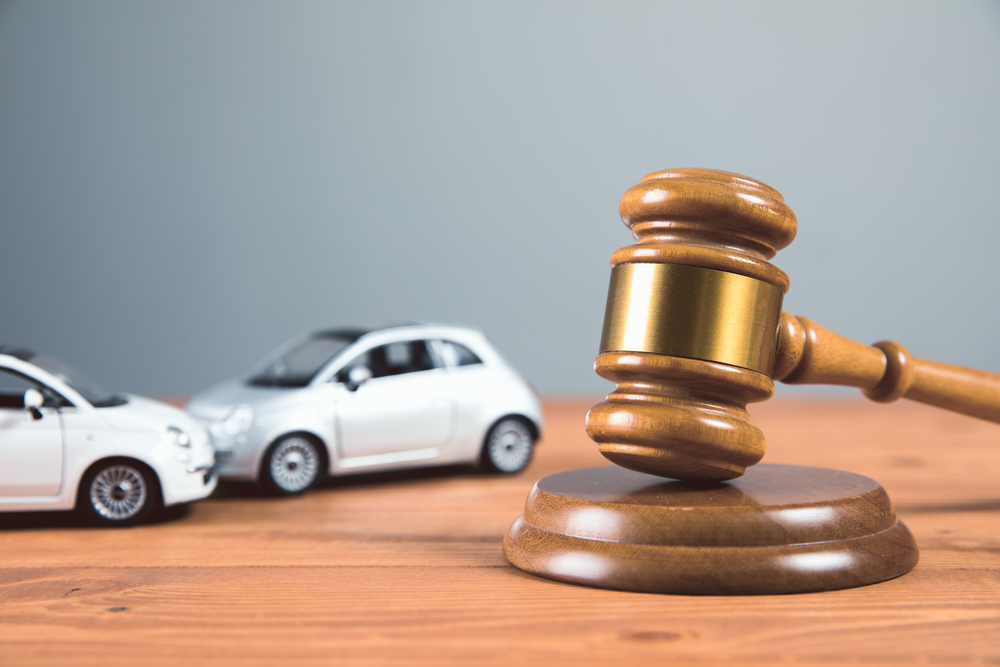Unfortunately, car accidents are common, often leading to physical injuries and emotional and financial distress. While many might feel equipped to handle minor accidents independently, serious accidents can quickly become overwhelming, and this is where Sebastian car accident lawyers step in.
But what exactly do they do? Let's look into their role and the support they offer victims.
Schedule A Consultation Today!
Initial Investigation and Case Evaluation

The immediate aftermath of a car accident can be a whirlwind of emotions, medical concerns, and pressing questions about liability and compensation.
During these moments, a car accident lawyer becomes valuable. The journey towards securing rightful compensation begins with investigation and case evaluation, where a car accident lawyer dissects and analyzes the cause of the accident.
Gathering Crucial Information
The first step includes gathering as much information about the accident as possible. Police reports are often the starting point, providing an official account of the incident. These reports contain details like involved parties, witnesses, road conditions, and sometimes preliminary liability assessments.
Witness Accounts
Witness testimonies play a role in understanding the accident from multiple perspectives. While official reports provide a structured account, witnesses can offer details that might not be immediately apparent.
Did the other driver seem distracted? Was there a vehicle that sped away unnoticed? These firsthand accounts can often reveal aspects of the accident necessary to build a strong case.
Surveillance Footage
Whether they're traffic cameras, security cameras from nearby businesses, or even dash cams from other vehicles, surveillance footage captures events with an unbiased lens.
Lawyers often seek out such footage as it can offer an unfiltered replay of the accident, corroborating testimonies or sometimes revealing new insights.
Reconstructing the Scene
Modern car accident claims sometimes involve more than just collecting accounts and footage. Technical experts may reconstruct the accident scene, and through physical evidence, such as skid marks or vehicle damage, and advanced software, they can recreate the sequence of events leading up to the crash. This scientific approach can identify the exact cause of the accident and any contributing factors.
Evaluating the Strength and Strategy
Once the initial investigation is complete, the collected information forms the foundation of the legal strategy. The lawyer evaluates the strength of the claim, identifies potential challenges, and anticipates the defenses the opposing party might present. This thorough assessment ensures you have a compelling case, maximizing the chances of a favorable outcome.
Gathering Evidence and Documentation of Damages
A strong evidence foundation is necessary when seeking compensation for a car accident. A compelling claim includes several forms of documentation and evidence to verify every assertion.
Let's dive deeper into the process lawyers use to accurately capture and represent every aspect of the accident's aftermath.
Medical Records
At the heart of most car accident claims are the injuries suffered, and medical records serve as undeniable proof of these injuries and the treatments administered. These documents from hospitals, clinics, and rehabilitation centers provide a chronological account of your medical journey post-accident. There is documentation of every medical interaction, from initial emergency room visits to subsequent therapy sessions.
These records don't just highlight the immediate injuries. They often contain doctors' prognoses, giving insights into the expected recovery trajectory and potential long-term health implications. You need such information when negotiating settlements that should account for future medical needs.
Collaboration with Medical Experts
While medical records provide a historical account, medical experts help project the future. Lawyers often collaborate with these professionals to better understand your injuries. For instance, a spinal injury might seem well-treated initially, but might it lead to chronic pain or mobility issues down the line?
By working with medical professionals, lawyers can anticipate future challenges you might face, ensuring that the claim adequately factors in potential future treatments, surgeries, or therapies.
Property Damage and Tangible Financial Losses
Car accidents often result in more than just physical injuries; property damage, especially to vehicles, can be expensive. Lawyers document this damage, using repair bills, photographs, and expert evaluations to determine the full extent of the loss.
The aftermath of an accident can quickly ripple through your financial life, and many face a loss of income due to their inability to work, either temporarily or, in severe cases, permanently.
Lawyers can construct a clear picture of these economic losses by gathering pay stubs, employment records, and sometimes even testimonials from employers or colleagues.
Factoring in Non-Economic Damages
While bills and receipts can quantify many of the damages, some impacts of a car accident are intangible. The emotional and psychological toll, pain and discomfort, and diminished quality of life—these non-economic damages are real, though not easily quantified.
Lawyers draw upon personal testimonies, psychological evaluations, and sometimes even journals or diaries kept by victims to shed light on these overlooked aspects. By doing so, they ensure that the settlement reflects the tangible costs and the emotional and psychological scars left after the accident.
Negotiating with Insurance Companies

With their vast resources and experienced adjusters, insurance companies often hold the upper hand in discussions, especially when dealing with claimants who lack legal representation. However, when a car accident lawyer steps in, the scales can shift, and they defend your rights and prioritize your interests.
Understanding the Insurance Adjuster's Role
Firstly, it's essential to recognize the role of an insurance adjuster. These people are trained professionals whose primary job is investigating the accident, evaluating the damages, and recommending or making settlement offers.
While they might come across as sympathetic or friendly, their ultimate loyalty lies with the insurance company, which thrives on minimizing claim payouts.
Insurance Company Lowball Tactics
Over the years, insurance companies have developed tactics to reduce the value of claims or even deny them outright. Some might offer a quick, lowball settlement, hoping that victims, overwhelmed by medical bills and repair costs, will accept without thorough evaluation.
Others may delve deep into your medical history, attempting to link injuries to pre-existing conditions and downplay the accident's impact.
Adjusters might nitpick statements given by victims, finding inconsistencies or ambiguities that can cast doubt on your account. There's also the ever-present tactic of delay – dragging out the claims process in hopes that you will grow tired or desperate and settle for less.
The Lawyer's Counterplay
Armed with experience and a deep understanding of these tactics, a skilled car accident lawyer can effectively counter the maneuvers of insurance companies. They cohesively present every piece of evidence, from medical records to accident reconstructions, leaving little room for misinterpretation or doubt.
Additionally, lawyers can draw upon past case histories, legal precedents, and a network of professionals, including accident reconstructionists, medical experts, and financial analysts, to support your claim. This multifaceted approach accounts for every potential damage, be it immediate medical costs, future treatments, lost income, or emotional trauma.
Perhaps most importantly, a lawyer sends a clear signal to the insurance company: a lawyer is pursuing the claim and will not accept any attempt to undervalue or dismiss it. Insurance adjusters approach claims represented by attorneys with a heightened sense of caution, knowing that these claims carry the potential for litigation if they cannot reach a fair settlement.
Litigation and Court Representation
While many claims find settlement outside the court, there are scenarios where litigation becomes unavoidable. Let's dive deeper into what this process entails.
Decision to Litigate: Weighing the Pros and Cons
The journey to the courtroom starts long before the first hearing. When negotiations with insurance companies stall, or the offered settlements fall short of what's fair, there will be a decision to litigate, which isn't a decision taken lightly.
Lawyers often assess the strength of the evidence, potential legal hurdles, the anticipated trial duration, and the client's emotional readiness.
Drafting and Filing Legal Documents
Initiating litigation requires a series of formal legal documents. The most important of these is the Complaint or Petition, which outlines your grievances, the defendant's alleged negligence, and the compensation sought. This document sets the tone for the case; once filed, it is served to the defendant, marking the official commencement of the lawsuit.
Discovery Phase
One of the lengthiest phases in litigation is the discovery process. Here, both parties exchange information, gather evidence, and interview witnesses. This phase can involve depositions (sworn out-of-court testimonies), interrogatories (written questions demanding written answers), and document requests. The evidence collected during this phase can make or break a case.
Pre-Trial Motions and Hearings

Before the actual trial begins, several motions and hearings might take place. These can range from motions to dismiss the case, requests for summary judgment (where neither party disputes the case's facts and they only need legal interpretations), or motions to exclude specific evidence. These pre-trial proceedings shape the trial by determining the presented evidence and which legal arguments will take center stage.
The Trial
The trial is where the attorneys lay out the accumulated evidence and make arguments. Acting as the plaintiff's advocates, car accident lawyers present their case before a judge or jury. They introduce evidence, cross-examine witnesses used by the defense, and create narratives that show the defendant's liability. Their goal is to convince the court of your rightful claim to compensation.
Closing Arguments and Verdict
After both sides have presented their cases, closing arguments offer a final opportunity to sway the judge or jury. Lawyers summarize the evidence, reiterate the defendant's alleged negligence, and emphasize the damages suffered by the victim. Once they make these arguments, the court delivers its verdict, determining fault and, if applicable, the compensation owed to the victim.
Post-Trial Motions and Appeals
Even after a verdict, the legal process might continue because either party can file post-trial motions, asking the court to alter its judgment or order a new trial. If these motions are unsuccessful, they can take the case to higher courts through the appeals process.
Understanding the Time Frame
The legal world operates on specific timelines, and car accidents are no exception. Every state has a set period, known as the statute of limitations, within which you must file a lawsuit for car accident injuries. Failing to act within this time frame can forfeit the right to sue and seek compensation, irrespective of the severity of injuries or the apparent fault of the other party.
Why Timelines Matter
The rationale behind the statute of limitations is multifaceted. On the one hand, it ensures that people file claims while the evidence is still fresh because witnesses' memories fade, and physical evidence can become less reliable.
By encouraging victims to come forward quickly, the legal system aims to base decisions on the most accurate and reliable information available.
On the other hand, it also provides potential defendants with a clear horizon, as it is unfair for someone to live indefinitely with the potential of being sued. With a set timeline, all parties involved have a degree of predictability.
Exceptions and Nuances
While the statute of limitations sets a general timeline, certain conditions and exceptions might extend or shorten this period. For instance, if the victim is a minor or mentally incapacitated, the clock might not start ticking until they turn 18 or regain capacity.
Conversely, if the defendant leaves the state after the accident and remains absent, the timeline is paused until they return.
One of the critical responsibilities of a car accident lawyer is to be aware of these timelines and ensure that clients act within them. They guide victims through the legal timeline and make sure that technical oversights do not forfeit any rights.
A professional keeping track of these essential dates lets you focus on your recovery and know someone is protecting your legal rights.
The Role of Expert Testimonies and Assessments
Car accident lawyers often collaborate with a network of professionals to paint a comprehensive picture of an accident's impact.
Medical experts can provide insights into your future medical needs, estimating potential long-term care costs or future surgeries. Vocational experts can assess your diminished capacity to work and estimate potential lost earnings. Psychologists or therapists can also attest to the emotional and psychological toll, shedding light on the non-economic damages.

By meticulously building a case that encompasses every aspect of the accident's repercussions, lawyers aim to secure compensation that genuinely mirrors the holistic impact on your life.
Speak with a Car Accident Lawyer Today
Car accidents are physically and emotionally challenging, but with a skilled car accident lawyer, the path to justice and fair compensation becomes clearer. They shoulder the legal burdens, allowing you to focus on recovery and healing.
